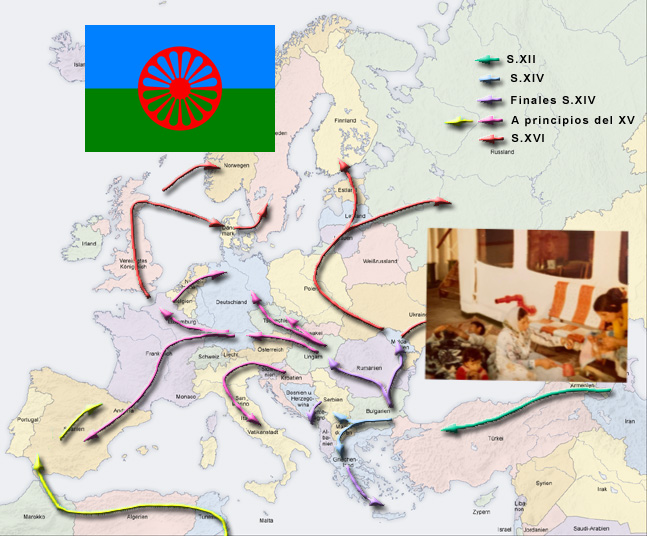MARCH 13, 2022 – Decades before Wokeness, use of the N-word signaled unflattering ignorance, intolerance, and overt racism. In 1981, the G-word, however, considered as derogatory as the N-word, was the only term by which I knew the “Roma” or “Romani” of Europe. This was so even though in 1971, this fascinating but universally despised group, with origins in northern India, had officially shed the “G-name” (derived from “Egyptian” or “’Gyptian”).
Aboard the rust-bucket from Samos to Piraeus, I was wholly ignorant of “Roma” and “Romani” (originated from Sanskrit—not Latin or Romanian). In the scrapbook of my Grand Odyssey, I blithely assigned the G-word to a photo I’d taken of Roma aboard ship.
Several Roma families had boarded at an intermediate port-of-call. They parked themselves on the rusting stern deck, where I’d stationed myself. In that proximity I observed Roma life unfold—for the several-hours to our next island-stop, where these unusual people disembarked.
Their physical features were more Indian than European. Their scruffy attire was neither Indian nor European. Their interactions with one another were brusque but not uncaring. Mothers were mothers; fathers—fathers; kids—kids. From their bags and bundles, the women unrolled blankets and spread them like tablecloths over the deck to accommodate a midday meal. Out came cups, bowls, fruit, cheese, bread, and bottles. From my perch, I watched with furtive fascination.
When the meal was finished, the remains were returned to bags and bundles. The Roma—including children—then got down to business: with metal cups and bowls, they combed the ship for “donations” from fellow passengers. If the staid Germans aboard turned away, I was impressed by the blatant “entrepreneurship” of the Roma: their unabashed solicitations were driven by the profit motive.
Yet today, with a better understanding of racism and oppression experienced by generations of Roma, I see how cumulative rejection became ingrained in these systemically marginalized people.
Months after my close-up view of those island-hopping Roma of the Aegean, I encountered another band of these nomadic people. I was aboard a large, comfortable, overnight ferry from Stockholm to Helsinki. Among Swedes and Finns temporarily loosened by aquavit in a large, open lounge, I sat by the windows and peered out at the black Baltic night. From nowhere a group of Roma in colorful costumes marched forth, unpacked an array of musical instruments, and staged a performance. When the commotion ended, each Roma—cup or basket in hand—circulated among the shocked onlookers. The entire scene was well worth the “price of admission.”
Post Script: During our 2012 Mediterranean cruise (see 3/11/22 post), we took a shore excursion to Olympia on the Peloponnesus. Our Greek guide was a middle-aged woman fashionably attired and exuding charisma, education, and sophistication. A short distance from the wharf, we saw a Roma encampment by the edge of the road. A member of the tour group inquired about the scene, whereupon our guide launched into a visceral diatribe against the “G-people.” Her racism would’ve put Bull Connor to shame for his timidity.
(Remember to subscribe to this blog and receive notifications of new posts by email.)
© 2022 by Eric Nilsson
